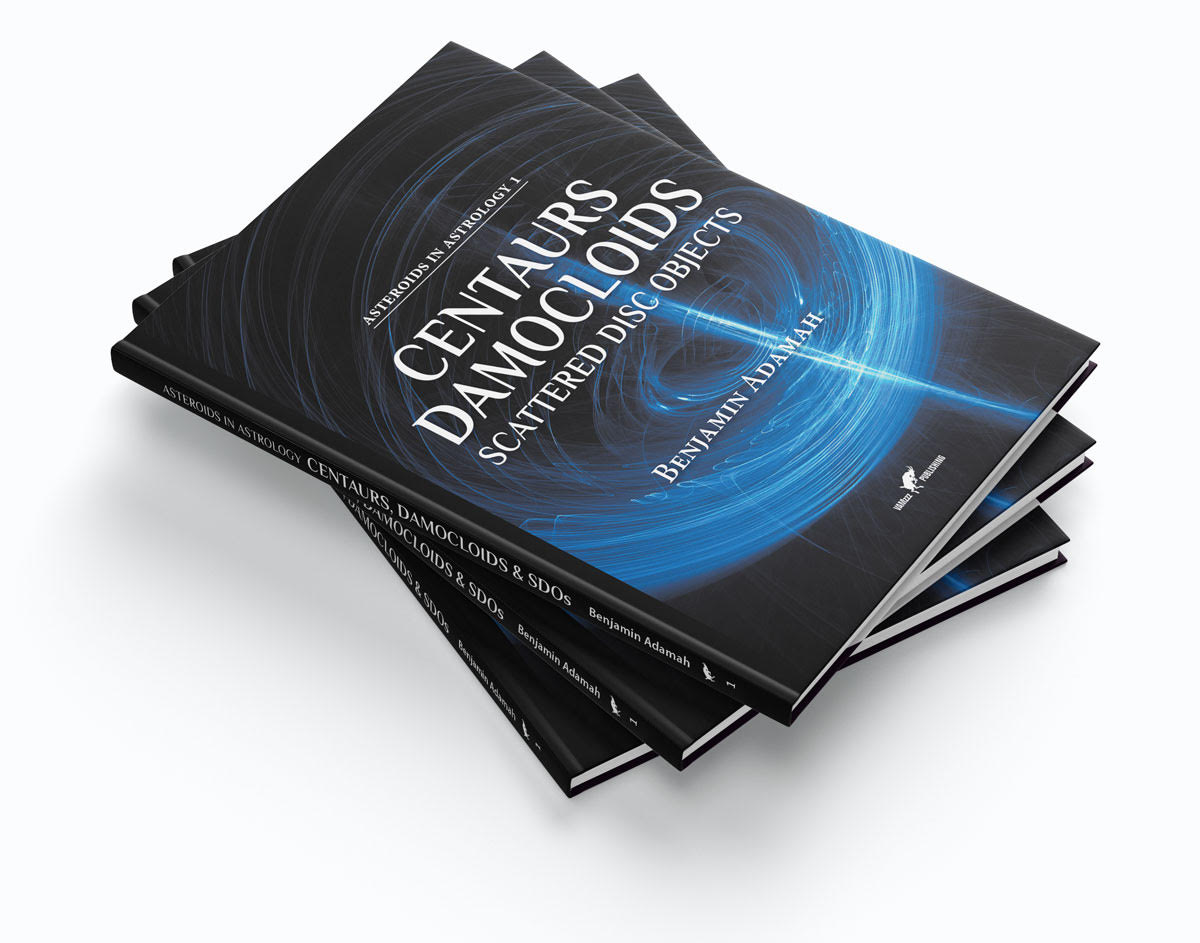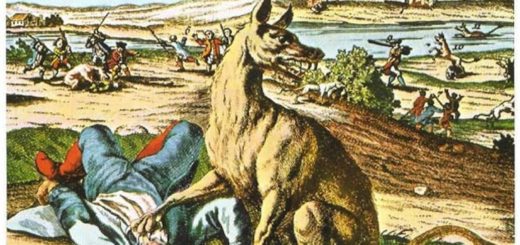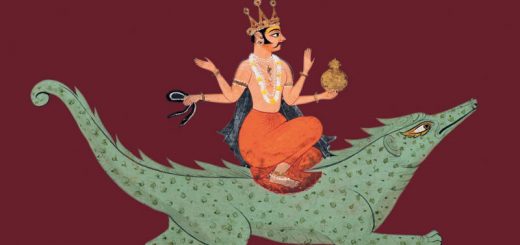Hecate – The Calling of the Crossroad Goddess
Hecate, Hecat, or Hekate (pronunciation: Hê kàh tai) is the most important goddess of magic. She rules the realization of astral forms into Earthly manifestation, and vice versa she bridges our aspirations to the astral realms and beyond. She is also the governess of liminal regions (particularly gates), twilight and the wilderness.

Witch Goddess Hecate with her Symbols
Like most ancient goddesses, Hecate had a strong connection to the Earth. In the Argonautica, a 3rd century BCE Alexandrian epic, Jason placates Hecate in a ritual prescribed by Medea, her priestess: bathed at midnight in a stream of flowing water, and dressed in dark robes, Jason is to dig a round pit and over it cut the throat of a ewe, sacrificing it and then burn it on a pyre next to the pit. He is told to sweeten the offering with a libation of honey, then withdraw from the site without looking backward, even if he picks up the sound of footsteps or barking dogs.

INTRODUCING AN ASTROLOGICAL REVOLUTION: Chiron and 84 other astrological meanings of asteroids belonging to the important Centaur-class are described in this revolutionary work. Centaurs are especially prominent in the horoscopes of original, weird, creative, magical and out of the box acting people. Among the described Centaur or Centaur-like asteroids are Aphidas, Hylonome, Bienor, Crantor, Eris, Gonggong, Dziewanna, Amycus, Okyrhoe, Echeclus, Orius, money-Centaur1998 BU48, Nessus, Pylenor, Pelion, ISON, Pholus, Narcissus, Asbolus, Zhulong, Kondojiro, Damocles, Hidalgo, Thereus and much more... For ordering this new astrology-bestseller click here.
All these elements point at rites owed to a chthonic deity. Hecate was popular among the lower classes of Rome and worshipped at home altars. Shrines to Hecate were placed at doorways to both homes and cities with the belief they would avert the restless dead and other spirits. Likewise, shrines to Hecate at three way crossroads were created where food offerings were left on the night of the new moon to protect those who did so from spirits and other evils.
The Romans imported Hekate from Greece, but originally she was an Anatolian goddess.
The Romans imported Hecate from Greece, but originally she was an Anatolian goddess. Her most important sanctuary in Greece was Lagina, a theocratic city, state, in which the goddess was served by eunuchs. Sacred to Hekate are deserted crossroads, borders, city walls, the Moon (especially the New Moon or Deiphon), the night, dogs, the polecat, horses, cows, daggers, wandering ghosts and souls, a chaplet, the numbers 3, 9, 13, 18, 27, 30, grotto’s, areas which symbolize the border of two worlds, crows, boars, ravens, serpents, dogs, the truth, the key, the red mullet and the torch.
Hecate was also a goddess of plant-lore. The yew (Taxus) was sacred to her and she is also associated with the elderberry, poppy and cypress. The goddess was said to especially favour offerings of garlic. A number of other plants (often poisonous, medicinal and/or psychoactive) are also associated with Hecate. These include aconite (also called hecateis), belladonna, dittany, and mandrake. It has been proposed that the usage of dogs for digging up mandrake is further corroboration of the connection of this plant with Hekate; indeed, since at least as early as the 1st century CE, there are a number of attestations to the apparently widespread practice of utilizing dogs to dig up plants associated with magic.
Several theories tried to explain the meaning of the name Hecate. One states it is derived from the Greek word for ‘will’. Another explains it via Ἑκατός Hekatos, an obscure epithet of Apollo. Hekatos has been translated as “she that operates from afar”, “she that removes or drives off”, or “the far reaching one”. The name of the Egyptian goddess of childbirth, Heqet, has been mentioned as well as a source.
Hecate rules all aspects of magic, including divination. In the Chaldean Oracles (2nd, 3rd century CE), she is associated with a strophalos – usually translated as a spinning top, or wheel, used in magic. “Labour thou around the Strophalos of Hekate.”
In todays astrology Hecate is associated with the Ascendant (the only link between the physical/material realm and the astral realms and beyond), the Vertex, Saturn, asteroid Hekate, New Moon, Full Moon, the Black Moons (Mean & Oscillating) and newcomers related to magic and the paranormal as Deucalion, Flammario, 2001 UR163 and most Plutino’s. January 31, May 7, and August 13 or 14 are Hecates holy days. The 30th day after a death or important change is likewise sacred to Hecate.

Modern statue of Hecate
The Hecate – Ritual
Hecate is invoked in magical operations involving divination, or trans-personal objectives, i.e. changes in the world soul or Yetzirah, as it is called in the Qabbalah, or in any case, the magician or witch has doubts about the karmic effects of the act. Hecate is called upon as a magical supervisor and given the veto in making the operation successful or without effect and to protect the operator. Thus the goddess is respectfully invoked before any more specified operating invoking or evoking a suitable entity for the realization of the actual target.
1. Symbola and sunthêmata
A sunthêma is a token or symbol agreed upon for communication. It does not have to be material, but can likewise be a pledge, vocalization. Sunthêmata can be entirely in the imagination. Symbolon is derived from sumballein (to bring two things together). The function of symbola are to connect, via material representations of the seira of the invoked entity, by earthing it’s psychosphere. The seira elements of Hecate are described above (Sacred to Hecate are deserted crossroads, borders, city walls, the Moon – especially the New Moon or Deiphon – the night, dogs, the polecat, hare, horses, cows, daggers, wandering ghosts and souls, a chaplet, the numbers 3, 9, 13, 18, 27, 30, grotto’s, areas which symbolize the border of two worlds, crows, boars, ravens, serpents, dogs, the truth, the key, the red mullet and the torch.) Seira means chain or chord. It connects by its symbolism one realm or dimension with it’s astral or divine counterpart.
2. The connecting
a. Decide whether your magical operation is aimed at gaining or increase or at a cutting off or decrease. In the former case use the hours or first two days just after the Deiphon or New Moon. Just mind the Moon is direct and not Void of
A sunthêma is a token or symbol agreed upon for communication. It does not have to be material, but can likewise be a pledge, vocalization.
b. Look for a three way crossing in a sandy or gravel road in a deserted area, preferable a place somewhere in nature.
c. On the crossroad draw a large triangle with a dagger or elderberry stick or stone. Place the sigil of Hekate in it, or simply draw the essential sigil (a Crescent Moon, pointed upwards, crossed by a lightning flash that starts in a circle and ends in a cross) in the earth. Then sit down in front of the triangle without the protection of a circle and make a mudra with your right hand (in case of gaining / increase magic) or your left hand (in case of a cutoff, or decrease aimed magic). The sigil and mudra form the sunthêmata, together with calling Hekate three times for help and guidance. Use one or more of the most proper names of Hecate (see the 33 names at the end of this article) for the overall magical purpose; specified in the ritual succeeding the ritual of Hekate.

Hecate sigillum
Now make a garlic offering by placing it in the triangle and start the invocation by imagining the proper psychosphere for communication. Your vivid imagination creates a medium for earthing the goddess as well as opening yourself up to the Hekate-channel so to speak. You manage this by utilizing the symbola of Hekate as thoughtforms which will constitute a sort of astral vessel or magnetic field to draw in the proper divine intelligence. No fear or doubt or cynicism may be felt or expressed.
Take some distance from the triangle to make it easier to imagine a deep purple haze above the it.
Imagine the sound of many fierce dogs in the distance coming closer, sounding louder and louder. Call upon Hekate again three times and use proper names in the operation. Imagine the goddess appearing in the triangle as a huge female figure, clothed in a black dress with pink crescent Moons embroidered on it, a crown in the shape of a Phrygian head or castle tower on her head, a torch in her right hand and a dagger in her left. Three pink snakes crawl before her feet and two huge black dogs position themselves next to her. She has bright dark eyes and a crescent silver Moon in front of her brow.
Hold this image and the atmosphere as vivid as possible and start your petition:
HEKATE KOILÔMATA – Holder of Keys – Ruler of the Daimones, discarnate and Kabirai, Tenderhearted Goddess, HEKATE PROPULAIA;
I (your name) call upon thee from the centre of DESMOS KAI EKLUSIS (to take & to let go) for supervision and protection. Be the judge of my aspirations and make my magic work, when it is justified. Make my magic fail when not, as thy wisdom and judgement are greater than mine. Show me the proper way and action, and when granting my request, please send me your omen.
Close your eyes and try to feel the presence of the goddess in the silence, stop imagining active and try to observe your “imagination space”. The Seira, or link to the goddess has been attempted and her reaction will first enter via your emotions and intuition. Does the atmosphere feel supportive and nurturing or hostile and threatening or is there nothing but a void? In all cases thank the goddess for listening and close the ritual:
HEKAE KRATAIIS, HEKATE TRIODIA I thank thee for paying attention and thy judgement.
I (your name) will now close the gate and wait for your omen.
Take the sigil from the triangle or wipe it out, wipe out the triangle and walk away without turning back. Start out the ritual out of your head and focus your thought on daily issues or any.
3. The omens
Hekate often reacts very fast when a wish is granted. The most common omens showing your wish is granted are a sudden barking of dogs, seeing a woman (usually with dark hair, walking with dogs), the sudden appearance of a dog, crow, three crows or hare, polecat, a hare running away, a sudden encounter with a black horse, a crow shouting three times, a ghost or apparition, a group of people splitting up and wandering in different directions (wandering souls), a piece of paper with one of her sacred numbers on it, etc.. When one of these omens shows up, not long after the ritual took place, one is granted to proceed under her blessing, guidance and protection.
The follow up ritual for the specific magic involving another entity or technique, like chaos magic, may then be safely done.
Advice
Advice to overcome your doubt and make a magical trust fall easier. No man or woman is a master of its own entity. We grow in our mother’s womb because of a divine creative intelligence, that also rules our heartbeat, breathing, our digestion of food etc.. Gods like Hecate represent sections of this higher intelligence, our co-entity. Remember this with respect and intelligence without acting humble or expressing spiritual fetishism. ♦

The 33 Names of Hecate – Hekate
© 2017-2019 Benjamin Adamah
VAMzzz Publishing book:
Sorceress (the English translation of La Sorcière) by Jules Michelet is still one of the most vivid, dark and confronting studies on witchcraft ever produced. Long before Murray, it positions the medieval witch within a diminishing ancient culture of nature worship and the ruthless efforts of Christianity – with its radical hostility towards nature and life – to overwrite it. Michelet’s was an authority on the history of the Middle Ages, and his insistence that history should concentrate on ‘the people, and not only its leaders or its institutions’ placed him ahead of his time as a godfather of micro-history.
Starting in the 13th century the book moves on towards belladonna, the Sabbat and pacts with Satan, into the hells of the Burning Times – social contexts, church intrigues and mass hysteria always included. Via Basque witches, the Black Masses and demoniacal possessions we enter the satanic decadence of 17th century France, and finally the end of the witch burning era in 18th century, with the trial of Charlotte Cadière.
Though a solid work of history, the reader is not served a simple bone dry exposition of facts and theories, but something that tastes like a Bloody Mary.
Sorceress
A Study of Witches and their Relations with Demons
by Jules Michelet
English
ISBN 9789492355249
Paperback, book size 148 x 210 mm
432 pagesInterested? Buy this book…
You may also like to read:
Witches ointment
Why did Witches Want to Ride their Broomsticks?
Historical werewolf cases in Europe
The Demonization of Pan
The incubus or succubus – nightmare or astral sex date?
The Ancient Witch-Cult of The Basques
Walpurgis Night
Stefan Eggeler: Walpurgis Night witches, Kokain (Cocaine) and other illustrations
Witchcraft paintings – Dutch 17th century
Rosaleen Norton, Daughter of Pan
Mysteries of the Ancient Oaks
Black Cat Superstitions
The Mystical Mandrake
Little Secrets of the Poppy
Datura stramonium or jimson weed or zombi-cucumber
Mountain spirits
Wild Man or Woodwose
Sprite
Claude Gillot’s witches’ sabbat drawings






